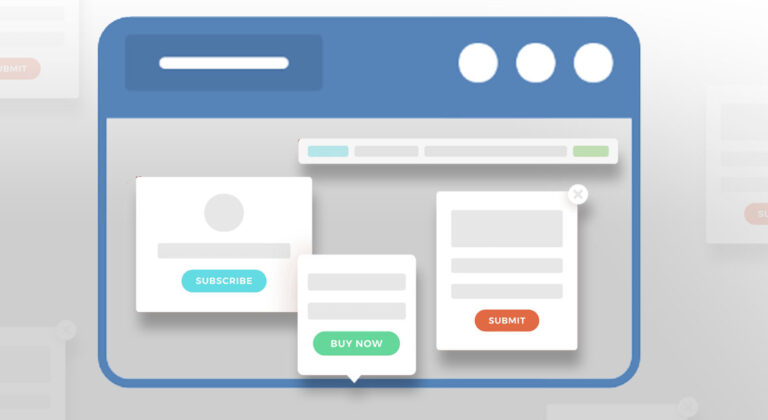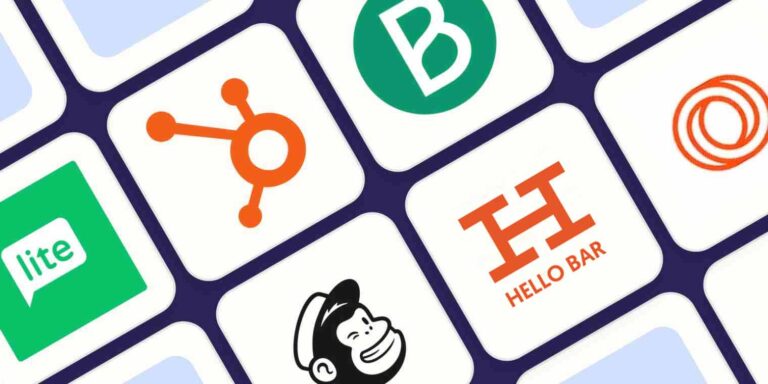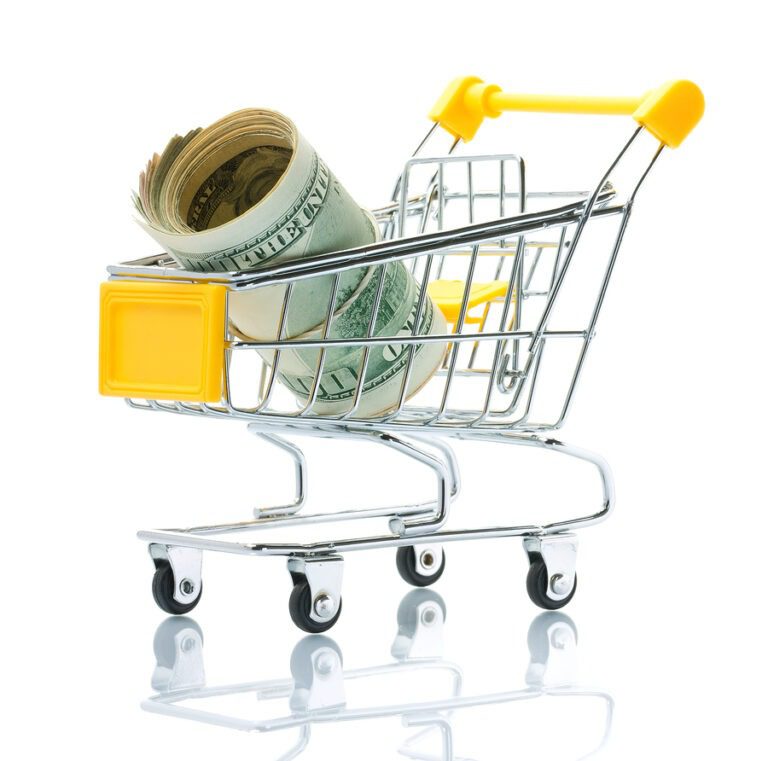5 Ecommerce Trends to Increase Your Site’s Revenue In 2025

I hope you enjoy this blog post. If you want Hello Bar to grow your leads, click here.
Author:
Ryan Bettencourt
Published
August 2, 2024

Ecommerce is continuing to grow in popularity, and with that comes the need to keep up with the latest ecommerce trends in order to keep your customers. In fact, customers in 2023 spent an incredible 5.8 trillion dollars on ecommerce purchases worldwide. Better yet, that number is expected to exceed eight trillion by 2027. That’s right. Trillion.
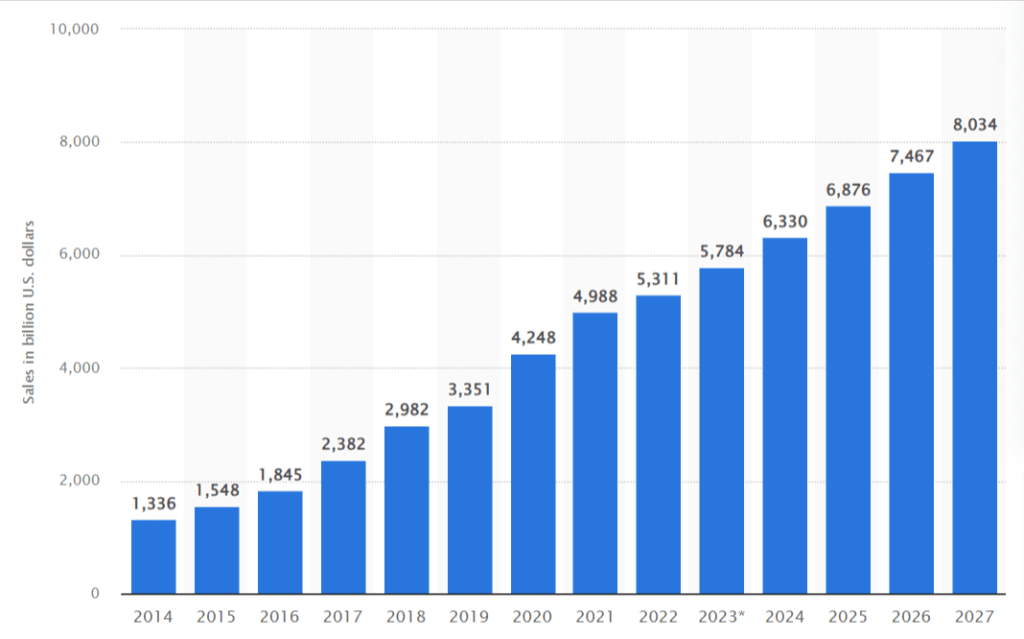
If you hadn’t noticed, ecommerce is pretty popular. Scratch that, it is very popular. There is a lot of competition and if your brand is not able to keep up, you won’t be getting your piece of the sales pie.
How can savvy businesses stay current and keep their customers engaged and happy? While there’s no short or easy answer to that question, there are several tips and marketing trends you can look to for help.
In fact, these 5 main marketing trends are having their moment in the ecommerce world and are helping brands from all industries boost sales. Not only will these trends help boost revenue, but they’ll also help improve customer satisfaction and keep your online shoppers coming back.
5 Ecommerce Trends to Boost Site Revenue
The ecommerce industry is evolving rapidly, and staying ahead of the curve is essential for driving revenue growth. To help you capitalize on the latest trends and significantly boost your bottom line, we’ve compiled a list of five strategies, as well as recommended various tools and platforms to help implement these top ecommerce trends.
#1: Web Push Notifications
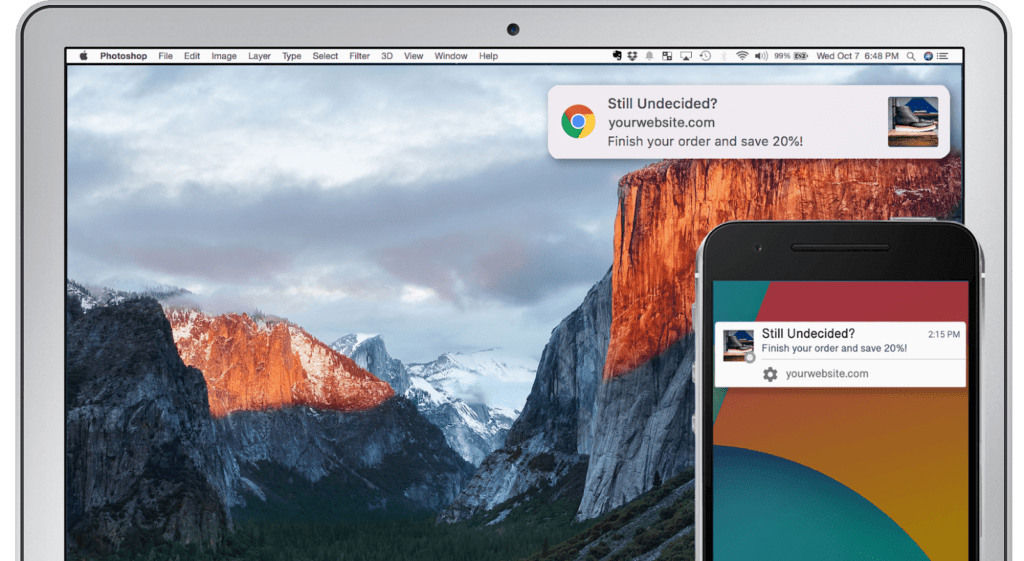
How many times have you missed an email in your inbox or scrolled past a post on your social media? Probably quite frequently. After all, we are bombarded with messages every day. The average person receives just over 80 emails per day during the work week. Fighting through the noise in a crowded inbox is becoming harder and harder for marketers.
Thankfully, that is where web push comes in. Web push notifications are the latest and greatest way for marketers to engage their audience both on desktop and mobile devices. Best of all, web push notifications deliver in real time and have a much higher visibility rate than other marketing methods.
Implementing an ecommerce localization strategy to web push ensures that your online store resonates with diverse audiences by adapting language, currency, and cultural nuances, thereby enhancing customer experience and boosting sales.

Web push also allows you to engage your audience quickly—perfect in today’s world of shrinking attention spans. Running a sale? Send out a push notification. Are new products available? Blog post published? Order shipped? No matter the message, you can utilize web push to send it to your audience.
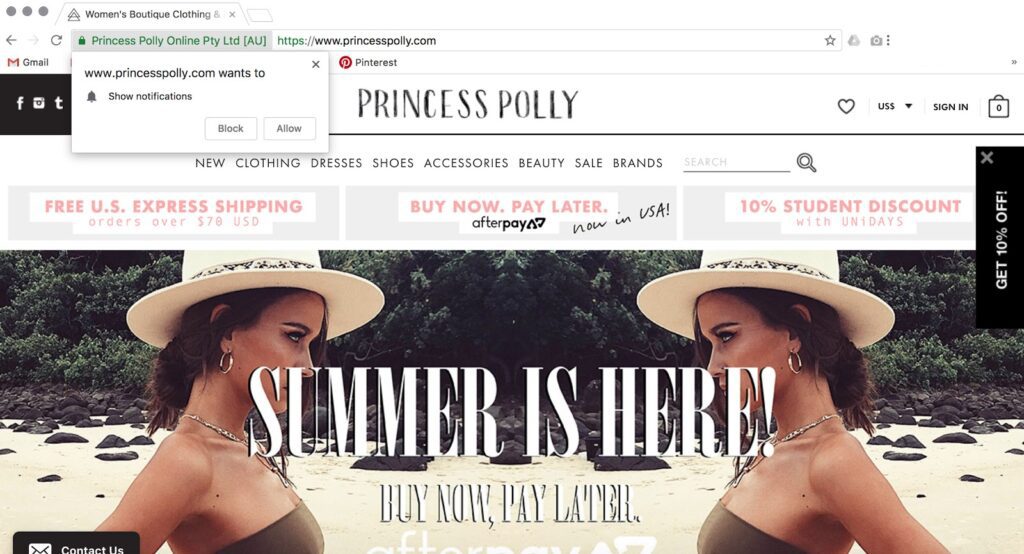
Image from Princess Polly
The path to becoming a web push subscriber is also much easier than email. The above image shows the standard opt-in prompt seen at ecommerce brand Princess Polly. If a user wants to subscribe, they hit allow. That’s it.
While others still use a multi-step form that requires checking your email, and clicking a confirmation link, here it’s just one click and then you’re done with web push.
Recommended Tool: Aimtell
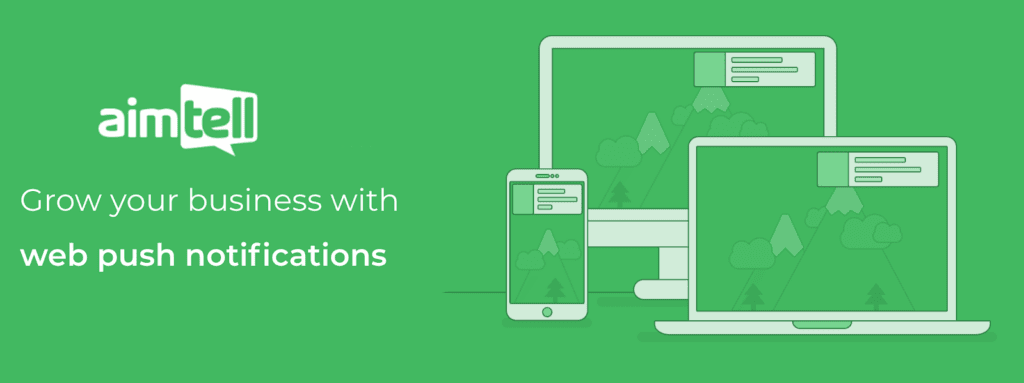
Getting started with web push is easy. There are several web push providers to choose from, and Aimtell is one of them. The installation process is very straightforward (either download our WordPress or Shopify app or install a few lines of code for all other websites).
Once you have signed up, you can start sending campaigns right away. You have the power to control who you send your messages to. Send campaigns to all your subscribers, just one, or anyone.
What we really like about web push is how much info you can track and use to help you send smarter campaigns.
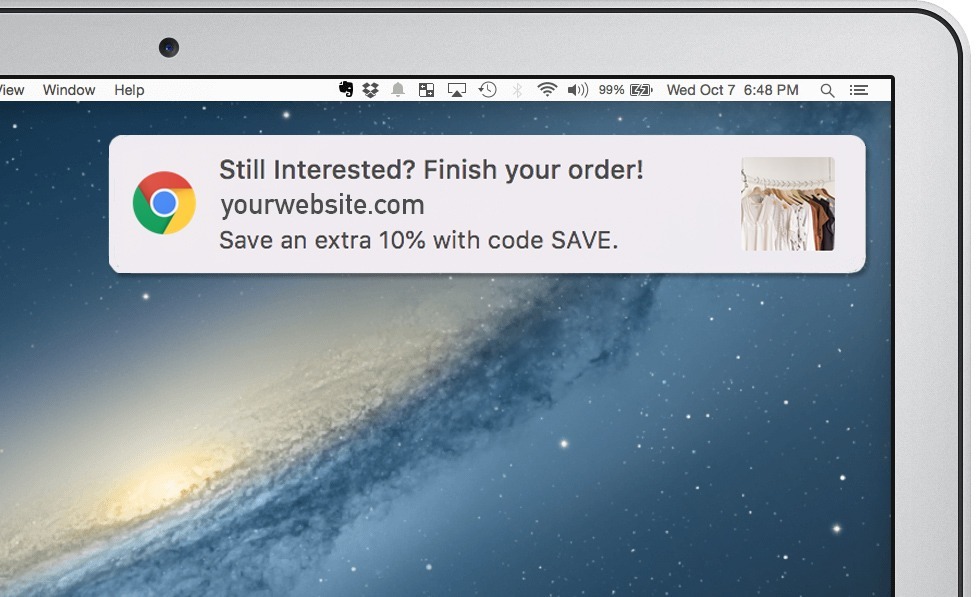
Retargeting abandoned carts has long been a top choice for marketers looking to increase conversions, but web push gives you a new way to do so. They work essentially the same way as other abandoned cart initiatives, but the increased visibility is a major plus. You also don’t miss out on targeting users who have not provided you with their email addresses.
Web push is a great marketing trend that is becoming more popular for a very good reason. Cut through the noise and speak directly to your audience with web push.
You May Also Like:
- 8 Content Promotion Proven Formulas to Greatly Increase Web Traffic
- Ecommerce Marketing: 32 Tips to Skyrocket Sales
#2: Native Buying on Social Media
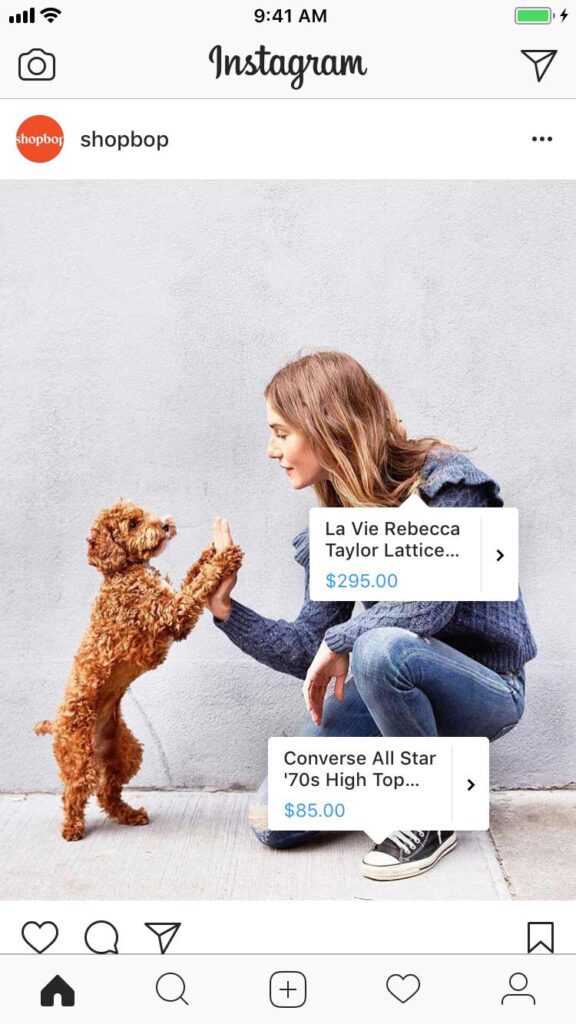
If you can’t beat them, join them. You are not going to get more visitors to your website than you’ll get on social platforms like Facebook or Instagram. And that’s okay! Instead, bring your store to social media. In 2024, Instagram had 2 billion monthly active users worldwide. That is a lot of potential customers!
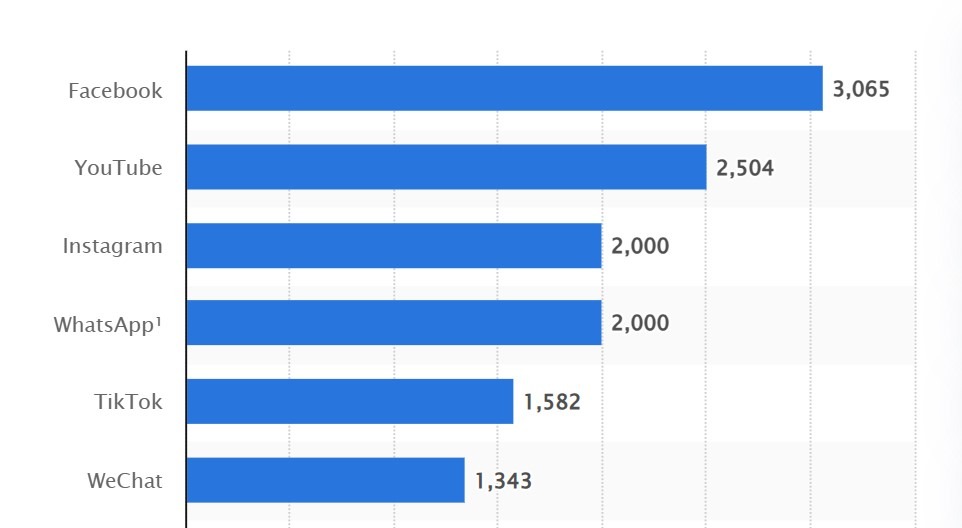
Image from Statista
Native buying has become very popular in the last year and is only expected to keep growing. Instead of having your customers leave social media to search for products on your website, native buying allows them to see your items and click to purchase them all within their social media platforms. Talk about convenience!
With convenience comes more sales. And like we’ve already mentioned, there is a lot of competition for ecommerce brands. The more steps a customer has to take, the higher the chances are they walk away before converting. Native buying makes it quick and easy for customers to purchase items that catch their eye.
In fact, Gen Zs are 71% more likely to directly purchase goods on Instagram, compared to 40% of US adults. These are users that are active, engaged, and ready to buy.
Recommended Platform(s): Instagram and Pinterest
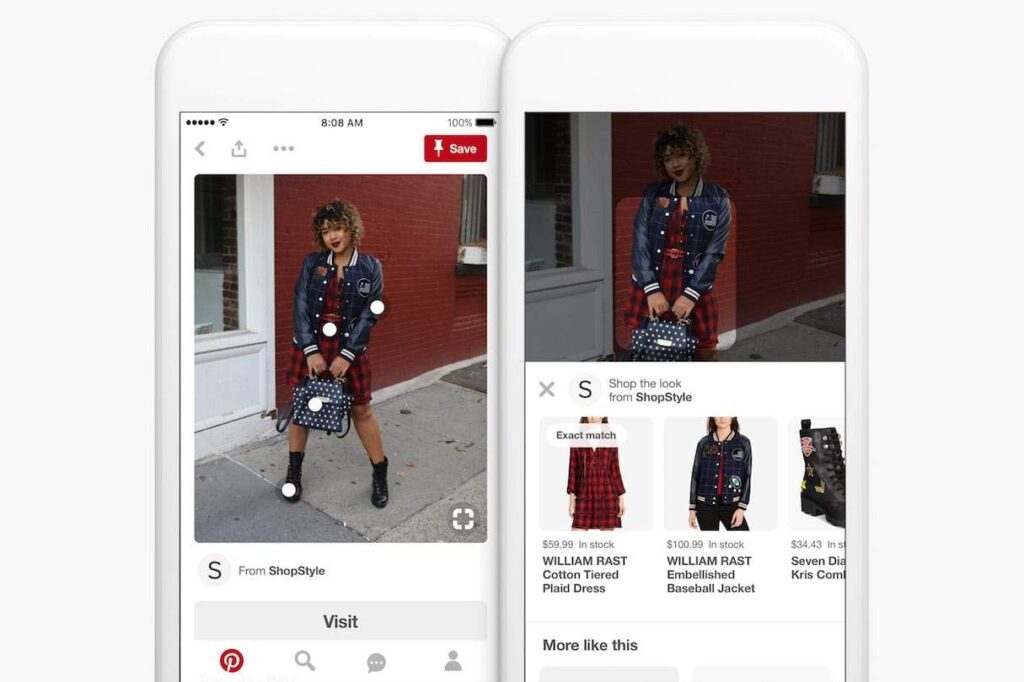
It’s not a big surprise that Instagram is our top suggestion! However, Pinterest is another platform to keep in mind. While they don’t have the same number of users as Instagram, they do have a very engaged audience looking to buy.
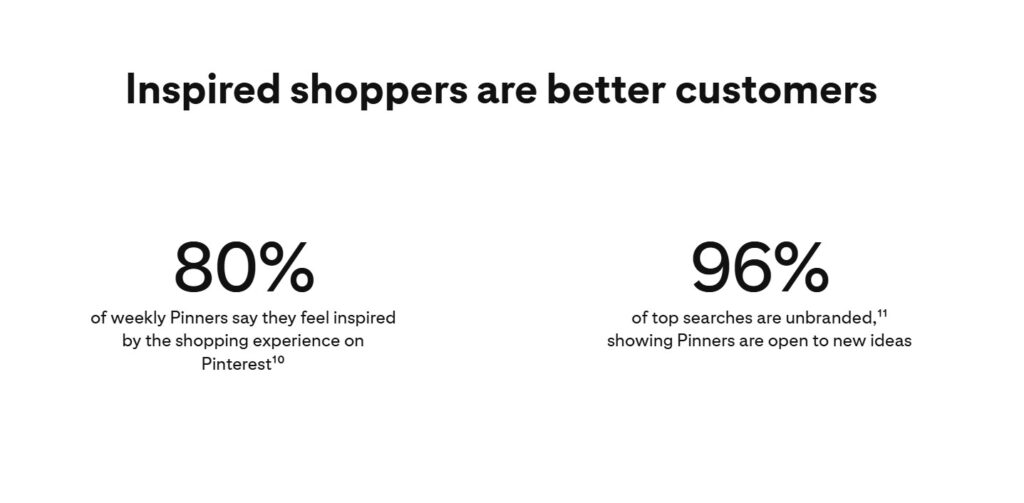
Image from Pinterest
As much as 80% of the platform’s weekly Pinners confirm that the online shopping experience on Pinterest is inspiring. Plus, its reach extends to 40% of US households whose annual income is over $150K. If these stats don’t make you want to head to Pinterest right away, we don’t know what will.
To get started selling on Instagram and Pinterest, create accounts with both platforms. For Instagram, you need to have a business Facebook account as well as a business Instagram account. Once you upload your product catalog to your Facebook Shop, Instagram will notice, and shortly after you will see the option to tag products.
For Pinterest, you must first apply for approval to use buyable pins. Your store must run on a platform such as Shopify or BigCommerce. Once approved, Pinterest will automatically convert existing product pins into buyable pins based on your store data.
Going forward, you can create new buyable pins by pinning a product and including the link to the product page. Pinterest will automatically convert it to a buyable pin! It couldn’t be easier.
#3: AI Chatbots
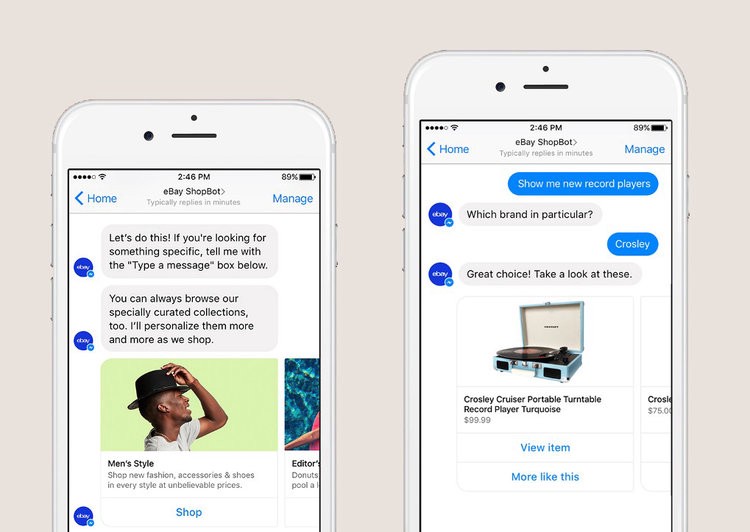
While artificial intelligence (AI) used to be out of reach for most ecommerce brands, it has recently become more accessible. In particular, the last year has seen the rise of chatbots. These bots, some developed by generative AI services, can interact with customers, answer frequently asked questions, give product recommendations, and sometimes even place orders. An AI agent can further enhance these capabilities by providing personalized assistance and automating complex tasks throughout the customer journey.
Quality and fast customer service are top concerns for most customers. When done well, it really pays off. In fact, companies with good customer service enjoy more loyalty and increased retention rates. Chatbots can help you scale your customer service efforts, ensuring you promptly respond to everyone.
Their use is only going to get more popular in the coming years. Getting on board now ensures your brand keeps up with customer expectations and delivers a great experience.
If a customer has a question, chances are they won’t place their order until they get an answer. Having a frequently asked questions page is an easy way to answer common questions, but you need more. A chatbot, particularly one crafted with an AI chatbot builder, is an easy way to allow your customers to ask questions 24/7. The quicker they get an answer, the more likely they will go through with their order. That means more sales for you!
Recommended Tool: ItsAlive
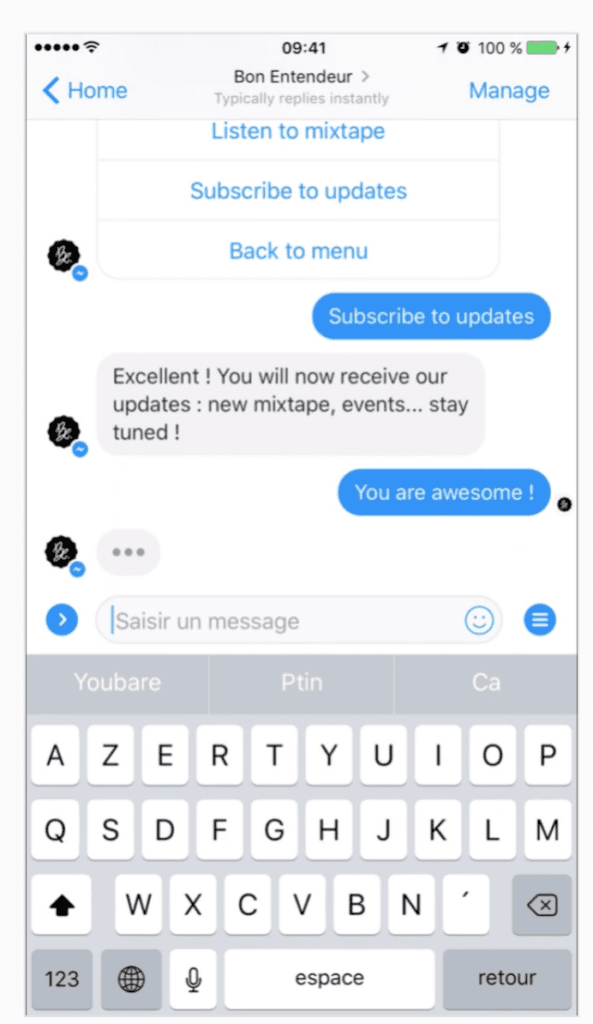
Remember what we talked about earlier regarding social media? It is where people spend the majority of their time online, so take advantage! Chatbots within Facebook Messenger are growing in popularity and are a great choice if you want to get started with AI.
Thankfully, you don’t have to worry about coding your own AI bot. Companies like ItsAlive do all the hard work for you. Creating a bot is easy. Let them know what you want your bot to be able to do, give them the necessary info, and they do the rest. Their bots can answer questions, alert users of special offers, and even host games that unlock special content.
Ensure you let people on your website know about your chatbot. Place info on your customer service page, or let them know in a pop-up or exit intent screen from Hello Bar.
You May Also Like:
- Exit Intent Popup: Set up Yours in Under 5 Minutes With These 13 Tips
- Email Popups – 13 Best Practices to Insanely Grow Your Conversions
#4: Product Videos and Gifs
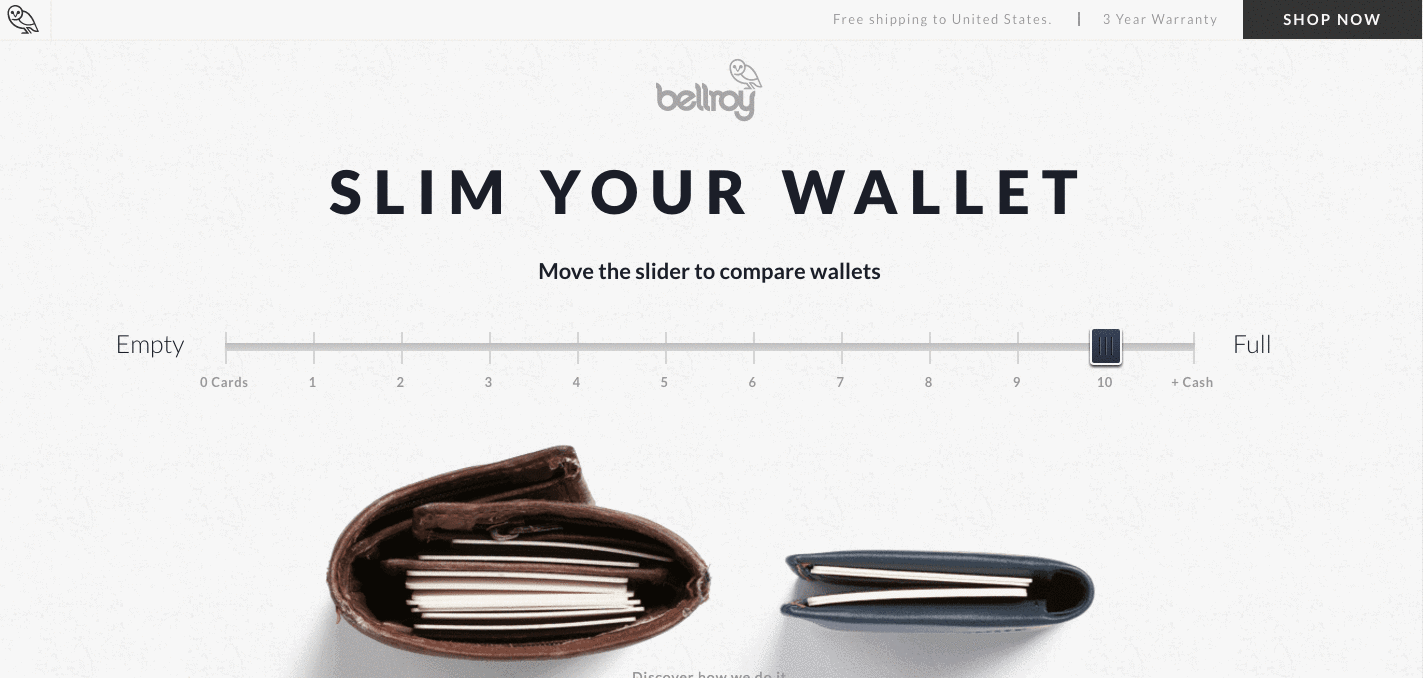
It shouldn’t come as a surprise that quality visuals are a necessity for ecommerce success. Because your customers cannot come into your brick-and-mortar store to see your items in person, you need to do a great job of displaying them.
Lately, there has been a trend towards product videos and GIFs as a top way to display your products. And it makes sense! Stats on video are always fantastic – people love them. In fact, as much as 91% of customers have watched explainer videos to learn more about a product or service, and 82% have been convinced to buy after watching.
While it is more work to put together a video (especially a high-quality one), it is work that will pay off literally. Above is one of the best product and homepage GIFs we have seen. The total focus is on the product and its great features. The interactive slider element is also a neat touch that gets users involved. They easily score an A+, and you can too!
Did you know you can also incorporate GIFs into your Hello Bar content? Include them in your popups or page takeovers to help better capture your audience’s attention before they leave.
Recommended Tool: Powtoon

If you don’t have a team of video producers in-house, you’re in luck. There are plenty of tools out there that can help you put together stellar video content. Powtoon is one such company. You can easily assemble whatever you need for your brand with a user-friendly interface and different video type templates.
As with any type of marketing, ensure you have a clear goal before getting started. Map out your ideas and come up with a clear plan. Say you wish to create a series of product videos. First, think about how you are going to display your products. Which features are important to show off? What is really going to sell the product to your customers? What sets you apart from your competition?
Next, ensure you have a clear goal for your videos – most likely one that would increase conversions and brand awareness. Pick a clear goal and stick with it. Use a tool such as Powtoon to help bring your ideas to life.
Product videos are great because they show a customer so much more than an image ever could. Show off the product in action and highlight all of its features. The more info, the more confidence a customer will have when buying. Confidence is key!
#5: One-Click Purchasing
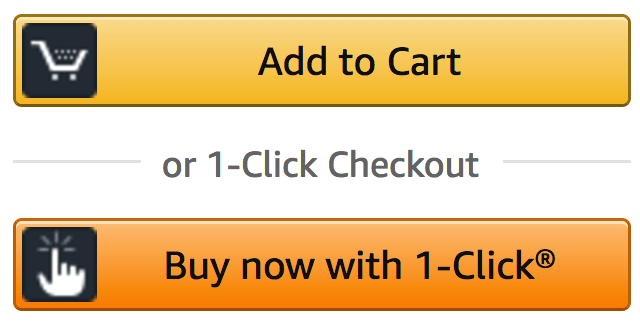
Thanks, Amazon! One of the biggest shifts we are seeing in ecommerce is faster checkouts. Simply put, customers are impatient. If your checkout process involves inputting a lot of information, you may be turning customers away, regardless of how great your products are.
While Amazon used to have control over one-click technology, its patent expired in September 2017. Now, other retailers are jumping on board and giving their customers easier, faster options for checkout.
In addition to one-click purchasing, another great way to speed up your checkout process is to offer a guest checkout option. This is a must-have feature for all ecommerce sites; otherwise, you could lose some serious retail sales. Nearly 30% of ecommerce shoppers will abandon their purchase if they are asked to register.
Allow users to check out as a guest. Remember, you can follow up with them later and ask them to register (once they have completed their purchase).
Recommended Tool: Cartly Slide Cart Drawer
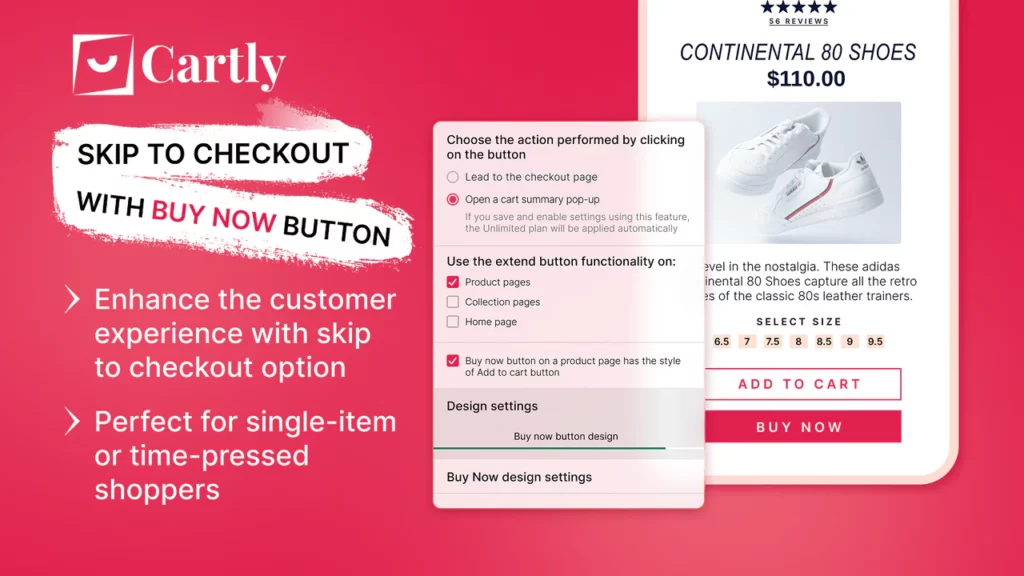
If you are looking to speed up your checkout process, consider an app such as the Cartly Slide Cart Drawer app for Shopify stores. Set up is quick and easy and is sure to make your customers happy.
More than likely, your customers are shopping online at Amazon, meaning they are used to the convenience of one-click buying. To stay competitive with the retail giant, you need to be able to offer some of the same convenient services they do.
Simply install the app from the Shopify App Store to get started. It offers multiple customization options and works with any Shopify theme. Complete with free technical support that is available 24/7, this is a no-brainer to implement at your store.
Once installed and active on your site, the Cartly Slide Cart Drawer can also be used in your other marketing efforts to set yourself apart from your competition.
Not running your store on Shopify? No problem. Other ecommerce platforms have released similar plugins as well. Consider the Direct Checkout for WooCommerce plugin if you run your store on WooCommerce, or One Step Checkout on Magento.
You May Also Like:
- 18 Fantastic Abandoned Cart Email Tips to Increase Your Conversions
- 22 Ecommerce Optimization Tips to Greatly Increase Conversion Rates
Ecommerce Trends Bonus Tip #1: Customer Retention

Customer retention is not a new trend for 2025, but like customer loyalty, no article discussing ecommerce marketing and sales is complete without its importance. In fact, a commonly repeated factoid is that it costs five times more to acquire a new customer than to keep an existing one.
That is a huge difference! With that in mind, ensuring you keep your loyal customers happy gives you the best chance of keeping them for life. The result? More revenue!
Ecommerce Trends Bonus Tip #2: Exit Intent Popups
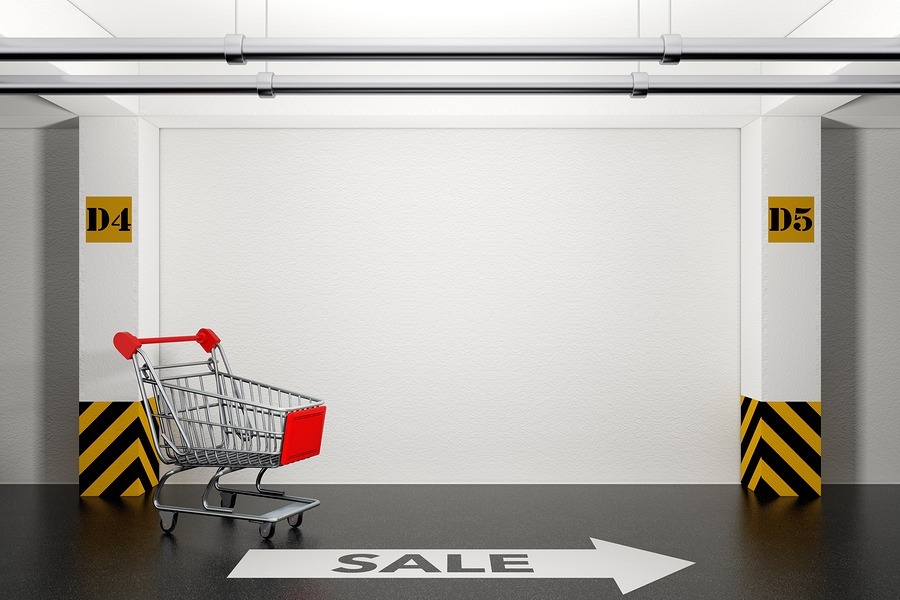
One last bonus tip before you go – exit intent page takeovers! These are some of the biggest ecommerce marketing trends, stemming from the concept of cart abandonment, but coming from a page abandonment angle instead.
What does exit intent mean? Well, when someone comes to your site, they always have the option to leave. In fact, 98% of visitors leave your website without taking action. No matter whether they’re on your site for 30 seconds or 30 minutes, visitors will always exit – and usually, they do so by clicking on the URL bar to type in a new site to visit. This is the exit intent’s time to shine!
With Hello Bar, you can set up your page takeover to occur right when your visitor goes to leave your site. You’ll get one last chance to reel your customer in by offering a last-minute discount or simply collecting their email address so you can invite them to visit again using a follow-up email campaign. It’s genius.
Here’s an example of the Hello Bar exit intent in action:
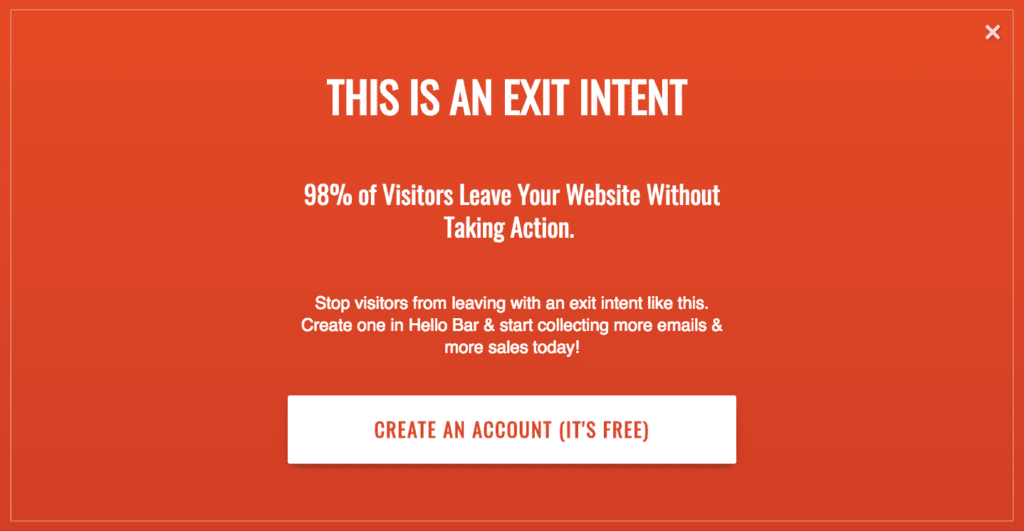
It’s easy to see why an exit intent page takeover works. Placing an awesome deal in front of a customer right as you’re starting to lose their interest works. It lowers your site’s bounce rate, increases your chance of making online sales, and worst case scenario, if your exit intent doesn’t work, there’s nothing to lose – your visitor is already leaving.
Exit intent page takeovers are certainly a marketing trend to try. No sales funnel is complete without one. Here’s some ideas on how to create your own exit intent page takeover.
You May Also Like:
- How To Create a Sales Funnel: 11 Proven-to-Work Conversion Tips
- 5 Common Mistakes When It Comes to Exit Popups (And Their Quick Fix-Its)
FAQs
1. How can personalized shopping experiences impact ecommerce sales?
Tailoring product recommendations, offers, and content to individual customer behavior and preferences can significantly boost ecommerce sales. This ecommerce trend of providing personalized shopping experiences reduces bounce rates, enhances user engagement, increases conversion rates, and fosters customer loyalty.
2. What role will artificial intelligence and machine learning play in ecommerce this year?
AI and machine learning will significantly impact the ecommerce industry by improving customer service, personalization, and operational efficiency.
These emerging technologies will help analyze consumer behavior and enhance customer service through chatbots, optimize inventory through predictive analytics, and detect fraud.
3. How can sustainable and ethical practices influence consumer purchasing decisions in 2025?
Over the past few years, many consumers have increasingly become conscious of the environmental and social impact. Ecommerce businesses prioritizing eco-friendly packaging, ethical sourcing, and transparent supply chains can attract environmentally conscious customers and build brand loyalty.
4. What are the best strategies for integrating social commerce into your ecommerce platform?
Effective strategies for integrating social commerce include shoppable posts on Instagram, Facebook Shops, and TikTok’s in-app shopping features. Ecommerce platforms should connect seamlessly with social media to enable easy product discovery and direct purchasing within these channels.
5. What role does omnichannel retail play in increasing ecommerce revenue?
Omnichannel retail boosts revenue by providing a consistent shopping experience across online, in-store, and mobile channels. This approach meets consumer expectations for convenience and flexibility, offering synchronized inventory and options like buy-online-pickup-in-store (BOPIS).
Conclusion
Standing out in a crowded sea of ecommerce brands can feel impossible. However, staying up-to-date with emerging trends and the latest tools allows you to market your brand effectively and engage your customers better than ever before.
Utilize web push notifications to contact users off of your site. Deliver your campaigns to both mobile and desktop users, ensuring you are reaching everyone, not just some of them.
Head to social media and bring your products with you. Make it even easier for your customers to discover your products and buy them as well. Add your products to Facebook, Instagram, and Pinterest, and watch your conversions soar.
AI chatbots can answer common questions and boost sales. Integrate your chatbot with social media to reach your customers and answer their questions promptly.
Take the time to create or improve the quality of your product videos or create GIFs that showcase all of your products’ great features. The more information you can provide, the better.
Finally, speed up your checkout process by enabling one-click purchasing or, at the very least, allowing customers to checkout as guests. A lengthy checkout process equates to fewer conversions. Reduce the number of steps and increase your sales.
What is your favorite method of engaging your ecommerce customers?




